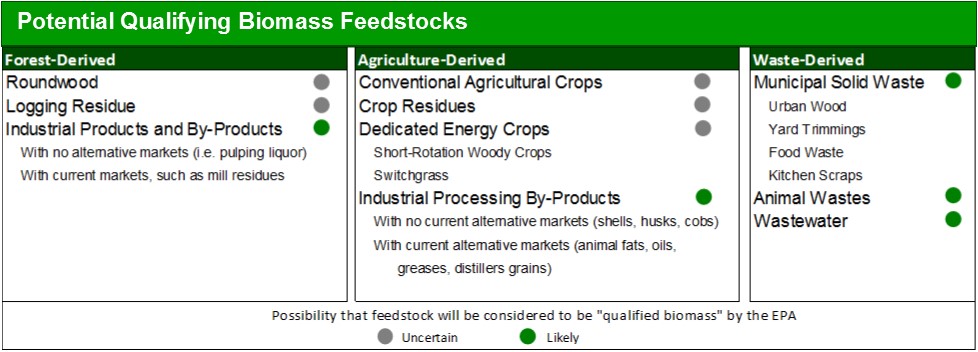This is the second blog in a series related to Forisk’s research of U.S. wood bioenergy markets and is an excerpt from the “Forisk Facts & Figures” published in the Q4 2015 Forisk Research Quarterly (FRQ) Publication. The first blog provided an update of wood bioenergy markets.
The Q4 “Forisk Facts & Figures” details the Clean Power Plan (CPP) and potential implications for wood markets and timber investors. Forisk’s bioenergy research tracks current and potential wood-using projects and assesses viability to quantify impacts on wood markets. The CPP has the potential to increase woody biomass use in the U.S. to offset carbon dioxide emissions from fossil fuels: what are the implications for wood markets and investors in the U.S.?
The Clean Power Plan (CPP) is an EPA regulation that would cut carbon dioxide emissions from U.S. power plants 32% below their 2005 levels by 2030. The Environmental Protection Agency (EPA) and President Obama announced the CPP on August 3, 2015. The CPP was entered into the federal register on October 23, 2015. The Plan calls for states to draft their own plans to meet state-specific targets that support the total U.S. target for 2030. States have three options, or “building blocks,” for reducing emissions: (1) increase renewable energy generation, (2) increase efficiency of power plants, and/or (3) switch from coal to natural gas. States have flexibility in implementing their plans, and have options on ways to measure emission reductions (rate-based or mass-based).
Large-scale increases in wood biomass use to satisfy the CPP are unlikely; wood will be part of the solution for some states, and will likely be residual or urban waste material. Biomass could play a role in state plans to satisfy the CPP, but uncertainty exists for which biomass feedstocks the EPA would allow (termed “qualified biomass”). While other renewable energy sources, such as wind and solar, do not emit carbon dioxide during electricity production, biomass-based generation can emit carbon dioxide. This fact complicates its use as an option to reduce carbon dioxide emissions, and heightens the importance of carbon accounting methodologies for this electricity source. The EPA will approve biomass sources in state plans that have a satisfactory proposed monitoring and auditing process. This leaves it to the states to identify biomass sources in their plans, propose carbon accounting methodology, and detail processes to monitor and track carbon and sustainability. The CPP does hint that some industrial products and waste-derived sources of biomass would likely qualify.


Leave a Reply